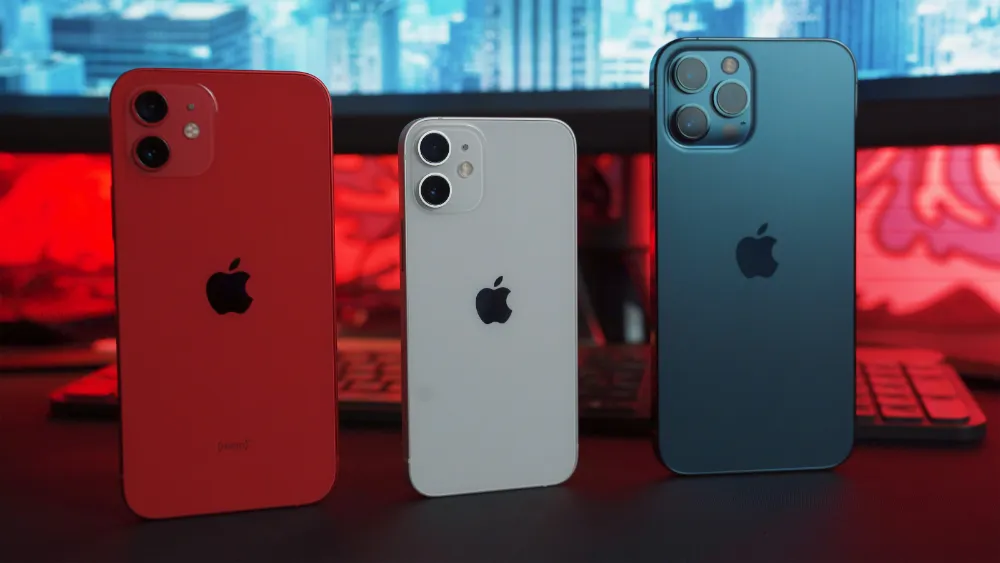eSIM
Does iPhone SE 3rd Gen Have eSIM? Your Guide to Digital SIM Power
Yes! The iPhone SE 3rd generation (released in 2022) fully supports eSIM technology. You can use it in two main ways: alongside a traditional physical nano-SIM card for dual SIM capabilities, or you can even use two eSIMs at the same time (if you ditch the physical SIM). This small chip packs a big punch, opening up a world of flexibility and convenience. Ready to see how this tech can make your phone work smarter for you?
Let’s dive into what having eSIM on your iPhone SE 3 really means.
Enjoy Flexibility with eSIM
So, your iPhone SE 3 has eSIM. But why should you actually care? What does it do for you?
First off, eSIM makes setting up or switching carriers much easier. Think about the old way: finding a paperclip, popping out the tiny SIM tray, carefully swapping the small plastic card, and hoping you don’t lose it. With eSIM, it’s often as simple as scanning a QR code or following a link from your carrier. It’s all digital.
No more tiny, fiddly plastic cards.
This digital nature brings some fantastic advantages:
- Run Two Numbers on One iPhone: This is a huge benefit. You can have your personal number on one SIM (physical or eSIM) and a work number on an eSIM. Or maybe you want a separate number just for online listings or specific contacts. Your iPhone SE 3 handles both seamlessly. You choose which line makes calls, sends texts, and which one uses data. It’s like having two phones in one sleek package.
- Travel Like a Pro: This is where eSIM truly shines. Instead of hunting down a local SIM card shop the moment you land in a new country, you can often buy and activate a local eSIM before you even leave home. Imagine stepping off the plane and your phone instantly connects to a local network. No more shocking roaming charges from your home carrier! Providers like eSIM4 offer affordable data plans for hundreds of countries, delivered right to your email for easy setup. This makes staying connected abroad incredibly simple and often much cheaper.
- Try Out New Carriers Easily: Curious about another carrier’s coverage in your area? With eSIM, you can often sign up for a short-term plan or trial without needing a physical SIM shipped to you. Activate it digitally, test the service, and decide if you want to switch, all without disrupting your primary number.
Quick Tip: Having dual SIM capability means you can use one carrier for voice calls (maybe they have the best rates) and another carrier for data (if they offer better speeds or coverage where you are). Mix and match for the best setup!
Get eSIM to Work for You
Knowing the benefits is one thing, but how does this translate into real-world use on your iPhone SE 3?
- Picture this: You’re heading to Europe for vacation. Before you go, you hop online and purchase a European data eSIM. You follow the simple setup instructions (often just scanning a QR code sent via email). When your plane lands in Paris, you switch your iPhone’s cellular data setting to use the travel eSIM. Boom! You have affordable data for maps, messaging apps, and sharing photos instantly. Your regular number can still receive calls and texts if you want (carrier charges may apply depending on your home plan), but your data usage is on the cheap local plan. Check out this guide on how to set up an eSIM when travelling for more details.
- Or maybe you run a small business: You don’t want to give out your personal number to clients. Get a second line on an eSIM for your iPhone SE 3. Keep business calls and messages separate. Maintain your privacy and look more professional without juggling two phones. It’s surprisingly easy.
- Live in an area with spotty coverage? Maybe Carrier A is great at your home, but Carrier B is better at your office. With dual SIM (using physical + eSIM or dual eSIM), you can have plans on both. Your iPhone SE 3 can intelligently use the stronger signal for data or allow you to manually switch between them.
Having eSIM is about giving you choices and control. It adapts to your needs, not the other way around.
Choosing Your SIM Style: What’s Right for You?
While eSIM is fantastic, the trusty physical SIM card still has its place. Let’s compare them so you know when each one might be better for your situation. Trying to decide? This breakdown on is eSIM better than a SIM? might help too.
Physical Nano-SIM:
- Pros:
- Super Simple Swapping: If you frequently switch your SIM card between different phones (especially older ones that don’t support eSIM), a physical card is easy to move.
- Universally Understood: Pretty much every phone user knows how a physical SIM works.
- No Internet Needed (Sometimes): You don’t usually need an internet connection just to insert the SIM, though activation might still require it.
- Cons:
- Easy to Lose or Damage: These things are tiny! Dropping one can be stressful.
- Needs a Physical Swap: Requires opening the SIM tray, which can be fiddly.
- Less Secure if Phone Stolen: Someone could potentially pop your SIM into another phone (though PIN locks help).
- One Slot, One Plan (Usually): You’re limited by the physical slots in your phone.
eSIM (Embedded SIM):
- Pros:
- Ultimate Convenience: Activate plans digitally, often in minutes, from anywhere with Wi-Fi.
- Great for Dual SIM: Easily add a second line without needing another physical slot. The iPhone SE 3 supports this perfectly.
- Perfect for Travelers: Get local data plans easily without swapping cards. Companies like eSIM4 specialize in this, offering plans for over 200 countries.
- More Secure: It can’t be physically removed if your phone is lost or stolen.
- Store Multiple Profiles: You can often store several eSIM profiles on your phone (though usually only one or two can be active at once).
- Cons:
- Not All Carriers Support It Fully: While growing fast, some smaller carriers or older plans might not offer eSIM yet.
- Switching Phones Can Be Tricky: Transferring an eSIM to a new phone isn’t always as simple as swapping a card. Carriers are improving this process, but it can sometimes require contacting them.
- Needs Connectivity for Setup: You typically need Wi-Fi or another cellular connection to download and activate an eSIM profile initially.
Which is Best For You?
- Stick with Physical SIM if: You swap your SIM between phones very often, especially older models, or if your preferred carrier doesn’t offer eSIM.
- Embrace eSIM if: You love convenience, want dual numbers, travel internationally, or want to easily try different carriers. For most iPhone SE 3 users, leveraging the eSIM capability offers significant advantages.
Important Note: Your iPhone SE 3 must be unlocked to use eSIMs from different carriers. If you bought your phone directly from a carrier, it might be locked to their network for a certain period. Check with them if you’re unsure!
Getting Started with eSIM is Simple
Activating an eSIM on your iPhone SE 3rd gen is usually straightforward. Here are the common ways:
- QR Code Scan: Many carriers (including travel eSIM providers like eSIM4) will email you a QR code after purchase. On your iPhone, go to Settings > Cellular > Add eSIM. Choose “Use QR Code” and scan it with your camera. Follow the prompts. Easy!
- Carrier App: Some major carriers allow you to add an eSIM directly through their official app.
- Link Activation: Some providers, like eSIM4, might send a link in their email that automatically starts the installation process when clicked on your iPhone.
- Manual Entry: If the QR code fails, you can usually enter the activation details manually (your carrier will provide these).
Before you start, it’s always a good idea to double-check if your specific phone model is compatible (which we know the SE 3 is!) and unlocked. You can find more general info here: How do I know if my phone is eSIM compatible?.
Make sure you’re connected to Wi-Fi during the setup process, as your phone needs to download the eSIM profile.
Skip the Frustration: Smooth eSIM Sailing
While eSIM is generally easy, here are a few tips to avoid potential bumps:
- Confirm Carrier Support: Before buying an eSIM plan, especially from your main domestic carrier, double-check they fully support eSIM activation for your specific plan type on the iPhone SE 3.
- Ensure Your iPhone is Unlocked: As mentioned, a carrier-locked phone won’t accept an eSIM from a different provider. Get it unlocked first if needed.
- Have Wi-Fi Ready: Activation almost always requires an internet connection. Do it where you have stable Wi-Fi.
- Label Your Lines: Once you have two active lines (physical + eSIM or dual eSIM), go into Settings > Cellular and label them clearly (e.g., “Personal,” “Work,” “Travel Data”). This makes managing calls, texts, and data much easier.
- Understand Data Switching: Learn how to designate your primary data line and how to switch it if needed (Settings > Cellular > Cellular Data).
Why eSIM is More Than Just a Feature
The inclusion of eSIM in the affordable iPhone SE 3rd gen is significant. It shows that this technology isn’t just for high-end flagship phones anymore. It’s becoming the standard.
Why? Because it offers tangible benefits:
- Enhanced Security: No physical SIM means one less vulnerability if your phone is stolen.
- Greater Flexibility: Manage multiple lines, switch carriers easily, and adapt your phone to your life.
- Travel Freedom: Say goodbye to expensive roaming and hello to affordable local data almost anywhere.
- Simpler Device Design: For manufacturers, removing the physical SIM tray saves space and improves water resistance. We’re already seeing eSIM-only iPhones in some regions.
Your iPhone SE 3rd gen with eSIM puts this modern convenience right in your pocket. It makes your already powerful phone even more versatile.
So, the answer is a clear and resounding yes. Your iPhone SE 3rd generation definitely supports eSIM, opening up fantastic possibilities for dual numbers, easier travel, and more control over your cellular plans. It’s a genuinely helpful feature that makes your digital life smoother and more connected.







